Nantwich: A Town That's Worth Its Salt
by Sue Wilkes
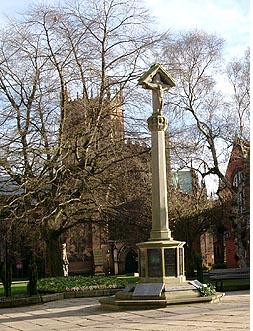 Nantwich, on the banks of the River Weaver, was the birthplace of herbalist John Gerard (1545-1612.) Called Hellath Wen, 'town of white salt,' by its Welsh neighbours, its history is just as interesting to explore as its picturesque streets and Tudor buildings. One of the 'wiches' or salt-making centres in Cheshire from the Roman occupation to Victorian times, this busy marketplace has seen many troubled times. Bands of invading Welshmen scourged Nantwich time and again; the Great Fire of 1583 destroyed over 600 houses; and the town played a pivotal role during the Civil War. Nantwich, on the banks of the River Weaver, was the birthplace of herbalist John Gerard (1545-1612.) Called Hellath Wen, 'town of white salt,' by its Welsh neighbours, its history is just as interesting to explore as its picturesque streets and Tudor buildings. One of the 'wiches' or salt-making centres in Cheshire from the Roman occupation to Victorian times, this busy marketplace has seen many troubled times. Bands of invading Welshmen scourged Nantwich time and again; the Great Fire of 1583 destroyed over 600 houses; and the town played a pivotal role during the Civil War.
The townsfolk must be indomitable characters, because the town has had to be rebuilt from scratch many times. The Norman Conquest brought the first great disaster. As in so many Cheshire towns, William the Conqueror's policy of 'wasting' enemy territory meant Nantwich was left in ruins; only one building was left standing. In 1086 the Domesday Book noted that the town of Wich had a salt pit and salt pans. Earl Hugh Lupus gave the town to William Malbank; (William the Conqueror had given Earl Hugh most of the lands in Cheshire, except those owned by the church.) The town then became known as Wich Malbanc until the 1500s, when the name Nantwych, and later Namptwiche, starts to appear.
Those troublesome Welshmen invaded in 1150, but were repelled after a huge battle. In 1245 the town was again destroyed, not by the Welsh, but by King Henry III on his way back from harrying Wales. The King wanted to deny the Welsh access to the brine pits; a terrible famine followed in the town. (Cheshire, Fred H. Crossley, 1949.) Throughout the Middle Ages, the town endured repeated attacks by the Welsh; but the biggest catastrophe to strike Nantwich occurred on 10 Dec 1583.
The Great Fire lasted for almost three weeks; although only two deaths were reported, the town was gutted; hundreds of buildings were destroyed. The rescue operations were not helped by some animal lover's decision to release Nantwich's four bears from their cage; while this saved the poor beasts' lives, it must have added spice to the proceedings.
Queen Elizabeth I, hearing of the town's plight, gave £1000 towards rebuilding the town; her prompt action has left a wonderful legacy of Tudor buildings. Townsman Thomas Cleeve recorded his gratitude to the Queen in an inscription on the front of his new house; it can still be seen opposite the entrance to Castle Street.
Civil War Strife
Smoke filled the air once again during the strife of the Civil War; but this time it was smoke from cannon and musket fire. Nantwich alone stood for Parliament in Royalist Cheshire. Strategically, the town occupied a crucial position; it had good road links to North Wales, London, the Midlands, and the North. If needed it "could bar the passage of troops through from Ireland into the heart of England." (The Civil War in Cheshire, R. N. Dore, Cheshire Community Council, 1966.) Parliamentarian Sir William Brereton sent troops to occupy the town in January 1643. Fortified earth walls and trenches were quickly constructed to help protect the town against cannon fire. The Parliamentarians' seizure of the town was greatly aided by the pusillanimity of the Royalist forces, many of whom ran for their lives when the first shot was fired; others hid in the church and refused to come out again, changing their minds only when the door was blasted in by the Parliamentarians.
The Royalist forces rallied, however, and the town was attacked repeatedly. In mid-December 1643 the Royalist Lord John Byron, commanding Irish reinforcements, besieged the town. For six long weeks the townsfolk suffered; at last on 25th January 1644 the siege was lifted by General Thomas Fairfax and Brereton after a great battle. Even the River Weaver played its part; when it burst its banks, the Royalist forces were split in two, making them easy prey. Each January the Parliamentarians' tremendous victory is still commemorated in Nantwich on the nearest Saturday to 25th January, known as 'Holly Holy Day.' (The townspeople wore sprigs of holly in their hats to celebrate.) The Sealed Knot Society perform an exciting re-enactment of the battle every year.
Peaceful Pursuits
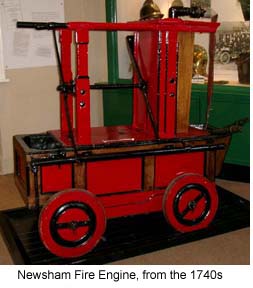 For hundreds of years, the prosperity of the town came from salt; its manufacture was tightly controlled. (See Northwich: The Town With That Sinking Feeling for details of salt manufacture.) Nantwich was the most important salt producer in the county until the discovery of rock salt at Northwich in 1670. There were 400 salt houses in Nantwich in 1530, all busily boiling brine to make salt; by 1605 this had declined to 216, until by the 1850s there was only one left in the town. (Historical Atlas of Cheshire, ed. D. Sylvester and G. Nulty, Cheshire Community Council, 1958.) For hundreds of years, the prosperity of the town came from salt; its manufacture was tightly controlled. (See Northwich: The Town With That Sinking Feeling for details of salt manufacture.) Nantwich was the most important salt producer in the county until the discovery of rock salt at Northwich in 1670. There were 400 salt houses in Nantwich in 1530, all busily boiling brine to make salt; by 1605 this had declined to 216, until by the 1850s there was only one left in the town. (Historical Atlas of Cheshire, ed. D. Sylvester and G. Nulty, Cheshire Community Council, 1958.)
The decline of the salt industry meant workers had to look for other means of employment. Nantwich was renowned for a number of different industries: its cheeses, clocks, and leather goods such as shoes. In the 18th century, there were dye houses and tanyards in the town; a coach maker's, a wheelwright, and two cotton mills (Nantwich in the 18th Century, Eric Garton, Cheshire Libraries, 1978.) There was a House of Correction for malefactors, and a Workhouse (now Barony Hospital) where the poor could be 'cared' for, or punished for being destitute, depending on your point of view. Those were cruel times; thieves (of both sexes) would be stripped to the waist, tied to the back of a cart, then whipped from Pillory Street to the bridge over the river. "Petty larceny" of goods worth just a few pence could result in the offender being transported to the American colonies for several years. A more charitable attitude to the poor, by some townsfolk at least, led to the building of almshouses, such as the Widows' Almshouse (1676) on Welsh Row.
Hunting for History
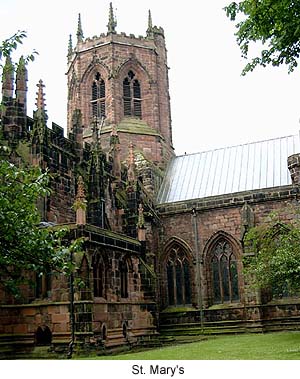 The easiest way to familiarise yourself with the town's history is to visit the Museum on Pillory Street. The Museum building, originally built to house the Nantwich Free Library, is next door to the site of the town jail; the jail door knocker can still be seen. Once inside, a lead salt pan, discovered in 1981, is visible proof that the Romans were busy extracting salt here from early times. Another exciting exhibit is the Worleston Ring, discovered in the nearby village of Worleston. This unique gold spiral ring dates back to Roman or possibly early Medieval times. The easiest way to familiarise yourself with the town's history is to visit the Museum on Pillory Street. The Museum building, originally built to house the Nantwich Free Library, is next door to the site of the town jail; the jail door knocker can still be seen. Once inside, a lead salt pan, discovered in 1981, is visible proof that the Romans were busy extracting salt here from early times. Another exciting exhibit is the Worleston Ring, discovered in the nearby village of Worleston. This unique gold spiral ring dates back to Roman or possibly early Medieval times.
One recent 'find' from Nantwich is still being conserved -- but it's so huge, that when displayed in the future, only half may be on show for visitors. In the summer of 2003, archaeologists working on the site of a medieval saltworks uncovered an immense salt 'ship,' weighing 2.3 tons. The 'ship', made from a tree trunk, was used to store brine before salt extraction took place. It is currently undergoing conservation work at York Archaeological Trust.
A Cheshire Cheese room gives an insight into the mysteries of cheese making; fine clocks show the talents of clockmakers such as Gabriel Smith (1654-1743); and there are displays on the tanning, leather and shoe industries, from clogs to the best 'bespoke' shoes, made in the Stevensons' factory which closed in 1932.
After your visit to the museum, hit the streets and hunt down some more history. But you don't need to be Sherlock Holmes to track it down; the past is all around you. To help you get more from your visit and identify the most historic buildings, the Tourist Information Centre has a Town Trail leaflet packed with information.
Nantwich was recently described in a survey by the New Economics Foundation as a 'home town,' rather than yet another 'clone' town spoilt by "big chain stores and fast food outlets" (Town survives attack of clones, Crewe Chronicle, 15.6.2005, http://iccheshireonline.icnetwork.co.uk/) A wander round the thriving market and winding streets soon confirms its traditional character, though the author felt some of the shop signs could be smaller in size, more in sympathy with the lovely old buildings.
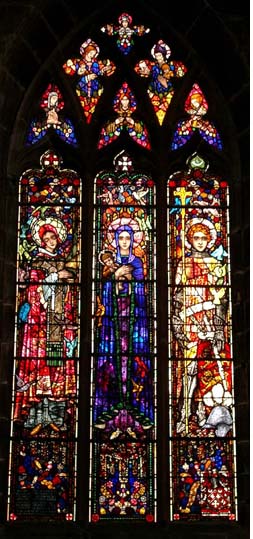 The logical starting point for your tour is the 14th C. parish church of St. Mary's, often called the 'cathedral of South Cheshire.' There has long been a place of worship on this site, but the present church is an outstanding example of medieval architecture. It was built in the 14th Century; its red sandstone exterior is adorned with many wonderful gargoyles. The tower is octagonal; sharp-eyed visitors who walk round to the eastern wall of the chapel may also spot some relics of the Civil War -- bullet holes marking unlucky spies' dreadful death by firing squad. Inside, many 14th Century features still survive, including a wonderful chancel with lierne (ribbed) vaulting, oaken misericords and wooden decorations. The stone pulpit is an unusual one, and dates from the 15th century. There is a wealth of amazing stone and wooden carvings, and stained glass windows add a rainbow of colour in the sunlight. The logical starting point for your tour is the 14th C. parish church of St. Mary's, often called the 'cathedral of South Cheshire.' There has long been a place of worship on this site, but the present church is an outstanding example of medieval architecture. It was built in the 14th Century; its red sandstone exterior is adorned with many wonderful gargoyles. The tower is octagonal; sharp-eyed visitors who walk round to the eastern wall of the chapel may also spot some relics of the Civil War -- bullet holes marking unlucky spies' dreadful death by firing squad. Inside, many 14th Century features still survive, including a wonderful chancel with lierne (ribbed) vaulting, oaken misericords and wooden decorations. The stone pulpit is an unusual one, and dates from the 15th century. There is a wealth of amazing stone and wooden carvings, and stained glass windows add a rainbow of colour in the sunlight.
St. Mary's is the star of the show, but it's surrounded by many special guest stars -- Nantwich's Tudor buildings, some of which, like Sweetbriar Hall and Churche's (sic) Mansions, date back before the Great Fire. The Crown Hotel, built in 1584-5 after the Fire, is a wonderful higgledy-piggledy building; some of the furniture inside has to be steadied with wooden blocks to compensate for the Hotel's crabbed old age. There are lots more fine black-and-white buildings, some early and some later in date on Welsh Row, so named because it was the route Welsh drovers took to bring their cattle to market.
Another attraction of Nantwich is its compactness; after only a short walk, you leave the town behind and are out in the countryside; again, leaflets are available from Tourist Information. Visit the Lake with its friendly ducks and geese, or pay your respects to the nearby memorial to 1st Lt. A.L.Brown, a USAAF pilot. In January 1944 this gallant airman made the supreme sacrifice, staying at the controls of his doomed Thunderbolt fighter so that it wouldn't crash on the town and its people. He was only 23 years old.
A pleasant walk along the banks of the Shropshire Union Canal also takes you past the site of the Civil War battle in 1644, now sleepy green fields. This link between Chester and Nantwich, the Chester Canal, was built during the 1770s, but the section from Nantwich to the Black Country was not authorised till 1826. Don't miss Telford's fine cast-iron aqueduct, which crosses over Chester Rd.
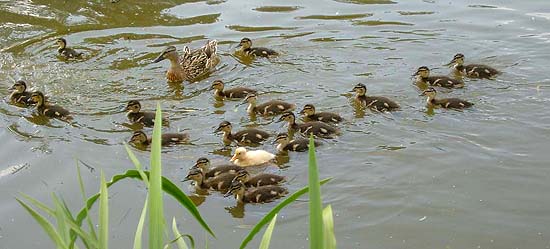
Related Articles:
- Northwich: The Town With That Sinking Feeling, by Sue Wilkes
- https://www.timetravel-britain.com/articles/towns/northwich.shtml
- Chester, by Sue Wilkes
- https://www.timetravel-britain.com/articles/towns/chester.shtml
More Information:
- Nantwich Museum
- Pillory Street, Nantwich, CW5 5BQ, +44 (0) 1270 627104
- Opening times: April - Sept Mon-Sat 10.30am-4.30 pm. October - March: As Summer but closed on Mondays. Free Admission. Several temporary exhibitions are planned for later this year; phone for details.
- St. Mary's Church
- Telephone: +44 (0) 1270 625268
- A guide book is available from the Church's visitor centre.
Nearby historical days out
- Dorfold Hall
- This splendid Jacobean Hall was built in 1616 for Ralph Wilbraham; it's believed to be on the site of a Saxon manor. Dorfold played its part in the battle for Nantwich during the Civil War; Royalist commander Lord John Byron based his artillery here.It has 18 acres of beautiful gardens. The Hall is host to the annual Nantwich and South Cheshire Show.
- Tel: +44 (0) 270 625 245
- Hack Green Secret Nuclear Bunker
- Go back in time to the Cold War; relive the scary days when Britain faced the threat of all-out nuclear war as you explore this massive underground bunker, designed to be a protected seat of government if the unthinkable happened.
- Tel: +44 (0) 1270 629219
- The Railway Age, Vernon Way, Crewe
- This exhibition was built to commemorate the 150th anniversary of the Grand Junction Railway in 1987. Have a steam-powered day with a model railway, steam engines, signal boxes and children's corner.
- Tel: +44 (0) 1270 212130
- Tourist information office:
- Church Walk, Nantwich, CW5 5RG; +44 (0) 1270 610983
More Information:
We regret that we no longer have the resources to maintain up-to-date links and/or hours and pricing details for the various sites and attractions listed on this website. For more information about the location(s) listed above, please use your favorite search engine or visit Wikipedia.
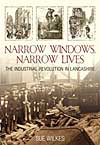 |
Sue Wilkes is a member of the Society of Authors. Her book Narrow Windows, Narrow Lives: The Industrial Revolution in Lancashire, an evocative look at everyday life during the Industrial Revolution in Lancashire, was published by Tempus (History Press) in 2008. Sue's next project is Regency Cheshire for Robert Hale. She lives in Cheshire with her family and two gerbils. To find out more visit http://suewilkes.blogspot.com/.
|
Article and photos © 2005 Sue Wilkes
|
